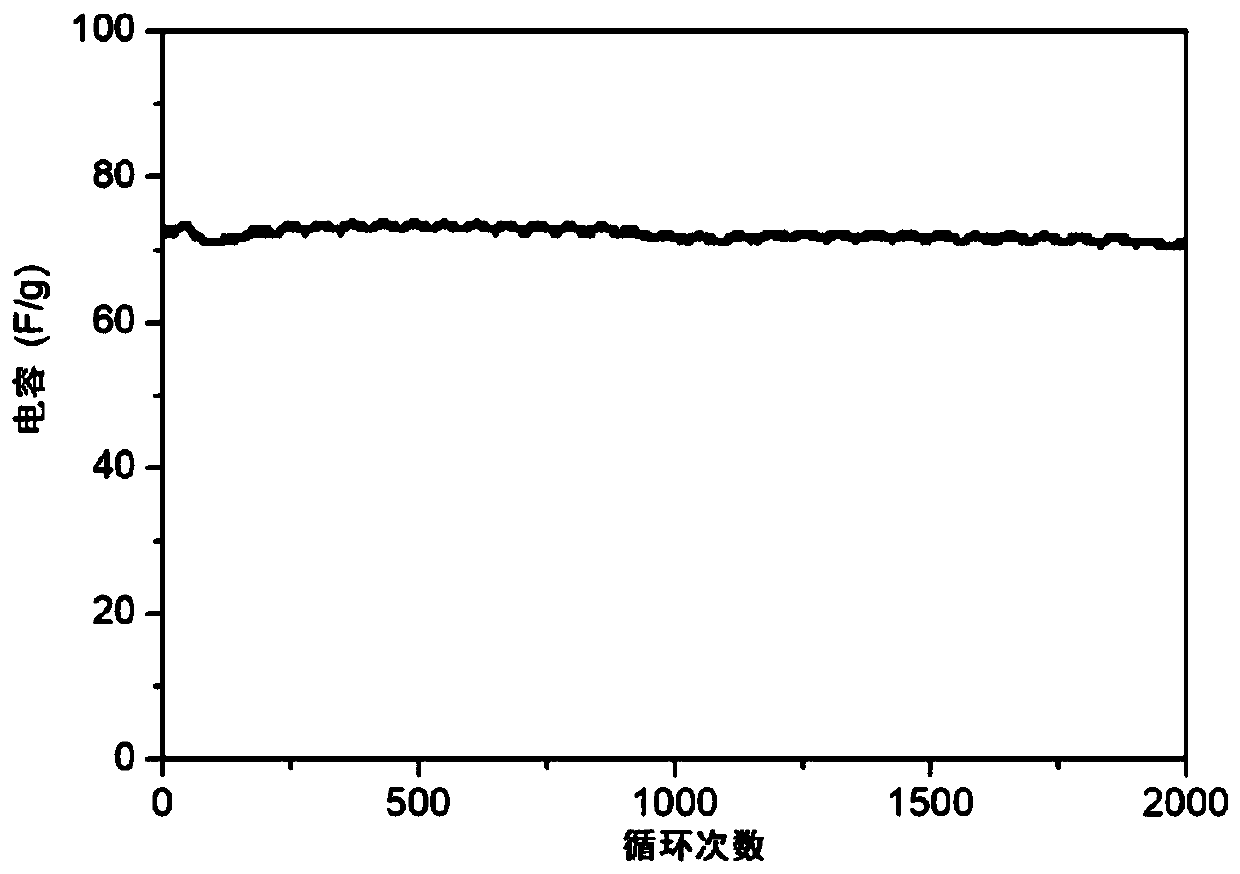Aqueous electrolyte and application thereof
An aqueous electrolyte and electrolyte technology, applied in the field of electrochemical energy storage, can solve the problems of poor interface compatibility, poor low temperature performance, high cost, etc., and achieve the effect of improving electrochemical performance and application range
- Summary
- Abstract
- Description
- Claims
- Application Information
AI Technical Summary
Problems solved by technology
Method used
Image
Examples
Embodiment 1
[0034] The specific composition of the aqueous electrolyte in this example is solvent water, the functional solute of restricted water molecules is sucrose, and the electrolyte is sodium nitrate. The preparation method is as follows: Weigh each group according to the weight ratio of water / sucrose / sodium nitrate = 1 / 2 / 0.1 And dissolve in water to obtain the aqueous electrolyte of this example. Among them, sucrose accounts for 64.5% of the mass fraction of the electrolyte. A three-electrode linear voltammetry was used to test the electrochemical window of the aqueous electrolyte prepared in this example. The saturated calomel electrode was used as the reference electrode, and the platinum disk electrode was used as the counter electrode and the working electrode. The electrochemical stability window of the aqueous electrolyte reaches 2.6V, and it can work stably at -40°C.
[0035] The aqueous electrolyte of this example is used in an aqueous sodium ion battery, and the positive el...
Embodiment 2
[0037] The specific composition of the aqueous electrolyte in this example is solvent water, the functional solute of restricted water molecules is sucrose, and the electrolyte is potassium nitrate. The preparation method is as follows: Weigh each group according to the weight ratio of water / sucrose / potassium nitrate = 1 / 2 / 0.1 And dissolve in water to obtain the aqueous electrolyte of this example. Among them, sucrose accounts for 64.5% of the mass fraction of the electrolyte. A three-electrode linear voltammetry was used to test the electrochemical window of the aqueous electrolyte prepared in this example. The saturated calomel electrode was used as the reference electrode, and the platinum disk electrode was used as the counter electrode and the working electrode. The electrochemical stability window of the aqueous electrolyte reaches 2.7V, and it can work stably at -40°C.
[0038] The aqueous electrolyte of this example is used in an aqueous potassium ion battery, and the po...
Embodiment 3
[0040] The specific composition of the aqueous electrolyte in this example is solvent water, the functional solute of restricted water molecules is sucrose, and the electrolyte is zinc sulfate. The preparation method is as follows: Weigh each group according to the weight ratio of water / sucrose / zinc sulfate = 1 / 2 / 0.1 And dissolve in water to obtain the aqueous electrolyte of this example. Among them, sucrose accounts for 64.5% of the mass fraction of the electrolyte. A three-electrode linear voltammetry was used to test the electrochemical window of the aqueous electrolyte prepared in this example. The saturated calomel electrode was used as the reference electrode, and the platinum disk electrode was used as the counter electrode and the working electrode. The electrochemical stability window of the aqueous electrolyte reaches 2.8V, and it can work stably at -40°C.
[0041] The water-based electrolyte of this example is used in a water-based zinc-ion battery. The positive elect...
PUM
 Login to View More
Login to View More Abstract
Description
Claims
Application Information
 Login to View More
Login to View More - R&D Engineer
- R&D Manager
- IP Professional
- Industry Leading Data Capabilities
- Powerful AI technology
- Patent DNA Extraction
Browse by: Latest US Patents, China's latest patents, Technical Efficacy Thesaurus, Application Domain, Technology Topic, Popular Technical Reports.
© 2024 PatSnap. All rights reserved.Legal|Privacy policy|Modern Slavery Act Transparency Statement|Sitemap|About US| Contact US: help@patsnap.com









